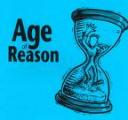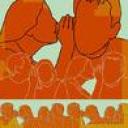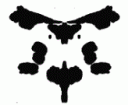Where do Happy People Live in the US?
Saturday, December 19th, 2009 The scientific study of happiness has had a big uptick over the last 3-5 years. This has been good for cognitive designers interested in trying to create a happy “think-and-feel” in their artifacts. Tough going to be sure so I am always on the look out for science-based work with design hints.
The scientific study of happiness has had a big uptick over the last 3-5 years. This has been good for cognitive designers interested in trying to create a happy “think-and-feel” in their artifacts. Tough going to be sure so I am always on the look out for science-based work with design hints.
 Check on the post on EurekAlert! covering happiness research in the US. It is statistically robust and it maps happiness to US states. Digging into the causes and correlations could reveal many hints for designers looking to create artifacts that make us happy. Rankings are shown below.
Check on the post on EurekAlert! covering happiness research in the US. It is statistically robust and it maps happiness to US states. Digging into the causes and correlations could reveal many hints for designers looking to create artifacts that make us happy. Rankings are shown below.
Andrew Oswald/ Wu ranking of happiness levels by US State
- Louisiana
- Hawaii
- Florida
- Tennessee
- Arizona
- Mississippi
- Montana
- South Carolina
- Alabama
- Maine
- Alaska
- North Carolina
- Wyoming
- Idaho
- South Dakota
- Texas
- Arkansas
- Vermont
- Georgia
- Oklahoma
- Colorado
- Delaware
- Utah
- New Mexico
- North Dakota
- Minnesota
- New Hampshire
- Virginia
- Wisconsin
- Oregon
- Iowa
- Kansas
- Nebraska
- West Virginia
- Kentucky
- Washington
- District of Columbia
- Missouri
- Nevada
- Maryland
- Pennsylvania
- Rhode Island
- Massachusetts
- Ohio
- Illinois
- California
- Indiana
- Michigan
- New Jersey
- Connecticut
- New York
Where do you live? Are you that happy?





 One way to probe the mind of your customer and surface unmet cognitive needs is through instruments that assess styles. These take the form of questionnaires that can be used to categorize and interpret how people perceive, think, learn, make decisions, manage emotions and otherwise process information. For cognitive designers this is one way to build a psychographic profile.
One way to probe the mind of your customer and surface unmet cognitive needs is through instruments that assess styles. These take the form of questionnaires that can be used to categorize and interpret how people perceive, think, learn, make decisions, manage emotions and otherwise process information. For cognitive designers this is one way to build a psychographic profile.

